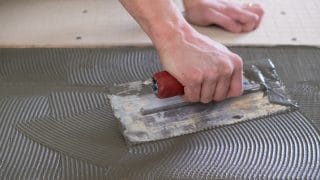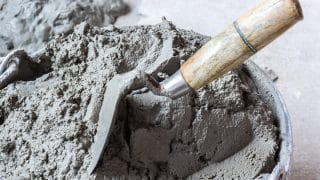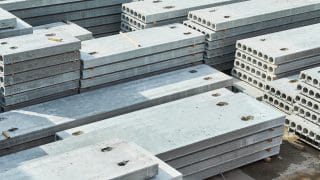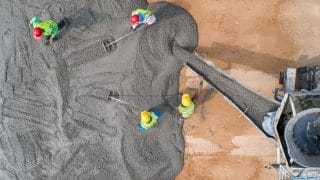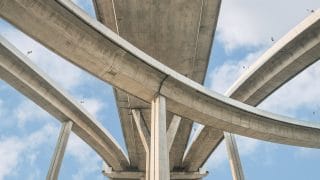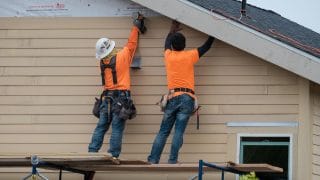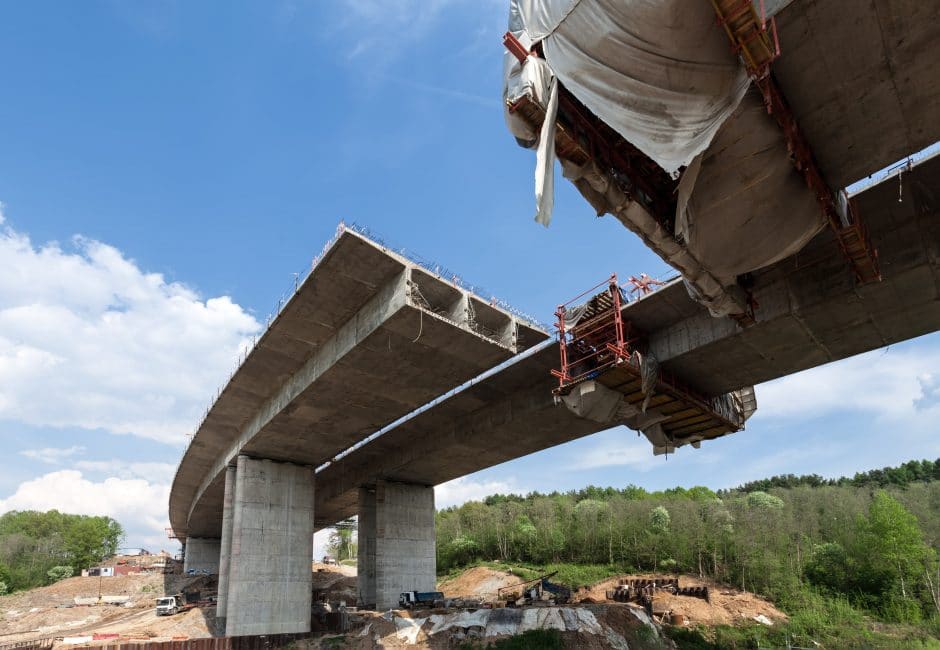
Concrete is the second-most widely used material on the planet, after water. We use concrete to build pretty much everything, but some types of concrete are stronger than others. Prestressed concrete is a type of concrete that uses stretched steel to put pressure on the concrete as it cures, thereby making it more resilient to weight and movement.
What is prestressed concrete?
Prestressed concrete is a type of concrete that has initial compressive stresses applied to it during production. This added step is taken to strengthen the concrete against the external forces that will be applied to it eventually during use.
The compressive strength of concrete, on its own, is very high, so when something presses down on it, it tends not to break from the compressive force. Where concrete lacks is in the area of tensile strength. So if something bends the concrete, it’s more likely to become damaged. In standard reinforced concrete, this is where the high tensile strength of steel comes in, and balances out the concrete, making it able to withstand compressive forces applied on top as well as tensile forces pulling and bending it.
Prestressed concrete takes this beneficial pairing of strengths one step further than simply reinforcing the concrete with high-strength steel tendons. During the production of prestressed concrete, the steel tendons are stretched as the concrete is poured and cured around them as they are still tensioned and at their highest strength. After the cables are cut from their suspensions, the concrete is pressed against them as they start going back to their pre-stretched length. At this point, each material is being pressed from all sides and therefore balances each other out, strengthening the overall structure from all angles.
What are the characteristics of prestressed concrete?
Prestressed concrete is ideal for buildings that require ultimate strength and long spans of performance, such as bridges, dams, highway overpasses, and parking garages. Advantages of using prestressed concrete include:
- Greater resistance, durability, and crack control. A prestressed concrete structure, compared to other types of concrete structures, is as strong as they come. The prestressing method also increases the durability and overall reliability of the concrete over time, as well as reduces cracking. Prestressed concrete is therefore used in high-scale structures where heavy loads are placed on it from different angles.
- Can be used for longer spans. Since the concrete is both reinforced and prestressed, foundations can be longer in length without the risk of breakage. This is beneficial in the case of, for example, large parking garages and other structures where lots of cars zip around.
- Thinner concrete slabs are possible. It’s possible to create concrete slabs that are thinner with prestressed concrete, due to the combined higher tensile and compressive strengths. This comes in handy for extremely tall buildings like high-rises—more floors can be created with less concrete, which can keep costs from increasing too high and keeping it economical.
What materials make up prestressed concrete?
The materials that make up prestressed concrete are the following:
Concrete is the second-most widely used material on the planet, after water. We use concrete to build pretty much everything, but some types of concrete are stronger than others. Prestressed concrete is a type of concrete that uses stretched steel to put pressure on the concrete as it cures, thereby making it more resilient to weight and movement.
What is prestressed concrete?
Prestressed concrete is a type of concrete that has initial compressive stresses applied to it during production. This added step is taken to strengthen the concrete against the external forces that will be applied to it eventually during use.
The compressive strength of concrete, on its own, is very high, so when something presses down on it, it tends not to break from the compressive force. Where concrete lacks is in the area of tensile strength. So if something bends the concrete, it’s more likely to become damaged. In standard reinforced concrete, this is where the high tensile strength of steel comes in, and balances out the concrete, making it able to withstand compressive forces applied on top as well as tensile forces pulling and bending it.
Prestressed concrete takes this beneficial pairing of strengths one step further than simply reinforcing the concrete with high-strength steel tendons. During the production of prestressed concrete, the steel tendons are stretched as the concrete is poured and cured around them as they are still tensioned and at their highest strength. After the cables are cut from their suspensions, the concrete is pressed against them as they start going back to their pre-stretched length. At this point, each material is being pressed from all sides and therefore balances each other out, strengthening the overall structure from all angles.
What are the characteristics of prestressed concrete?
Prestressed concrete is ideal for buildings that require ultimate strength and long spans of performance, such as bridges, dams, highway overpasses, and parking garages. Advantages of using prestressed concrete include:
- Greater resistance, durability, and crack control. A prestressed concrete structure, compared to other types of concrete structures, is as strong as they come. The prestressing method also increases the durability and overall reliability of the concrete over time, as well as reduces cracking. Prestressed concrete is therefore used in high-scale structures where heavy loads are placed on it from different angles.
- Can be used for longer spans. Since the concrete is both reinforced and prestressed, foundations can be longer in length without the risk of breakage. This is beneficial in the case of, for example, large parking garages and other structures where lots of cars zip around.
- Thinner concrete slabs are possible. It’s possible to create concrete slabs that are thinner with prestressed concrete, due to the combined higher tensile and compressive strengths. This comes in handy for extremely tall buildings like high-rises—more floors can be created with less concrete, which can keep costs from increasing too high and keeping it economical.
What materials make up prestressed concrete?
The materials that make up prestressed concrete are the following:
- Concrete. The primary role of concrete in prestressed concrete is the resulting compressive strength of the structure. Prestressed concrete commonly uses high-strength concrete, which is a type of concrete that has a greater compressive strength of 6000 pounds per square inch (PSI) or higher. It is made using durable aggregates, has a high cement content and lower water to cement ratio, and often utilizes superplasticizers to improve workability issues stemming from a more cementitious concrete. Compared to normal strength concrete, high-strength concrete is lighter and more resistant to corrosion and chemicals.
- Steel. The other material that makes up prestressed concrete is some sort of high tensile strength steel reinforcement. This could be in the form of tendons, bars, wire strands, or cables. When prestressed during the manufacturing process, these steel tendons are what give the prestressed concrete its tensile strength. They are stretched, or tensioned, as the concrete is poured around them, resulting in the concrete being able to withstand being pulled or bent, rather than just being pressed down upon.
How is prestressed concrete made?
There are two common ways of prestressing concrete: pre-tensioning and post-tensioning.
- In pre-tensioning, the steel tendons are stressed by stretching them in between two separate anchorages before the concrete is placed. After the concrete is cast, the tendons begin to bond to the concrete. When the concrete hardens and strengthens, the tendons are cut at the anchorages and released, and the tensile stresses of the steel create a compressive strength within the concrete.
- In post-tensioning, the steel tendons are stretched and anchored in the concrete after it has hardened. This is done by pouring the concrete around the steel, without actually touching it. The tendons can either be placed in plastic sleeves as the concrete is poured around them, or by forming ducts using steel forms where the tendons will eventually go after the concrete is hardened. After the hardened concrete has gained its strength, the tendons are tensioned and anchored on the concrete’s outer edges. This type of concrete differs from typical reinforced concrete because the tendons are not actually bonded to the concrete, but rather encapsulated in a protective material separating it.
MT Copeland offers video-based online classes that give you a foundation in construction fundamentals with real-world applications, like drywall finishing. Classes include professionally produced videos taught by practicing craftspeople, and supplementary downloads like quizzes, blueprints, and other materials to help you master the skills.

